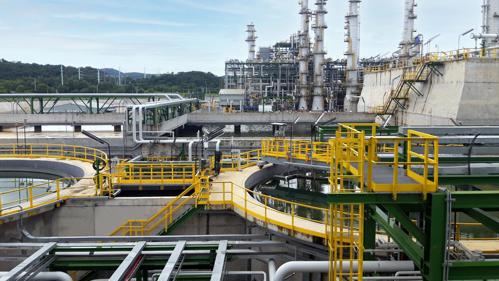Cannon Artes breaks ground on massive industrial wastewater treatment/water reuse plant in Qatar
Cannon Artes is building a large-scale, advanced wastewater treatment and water reuse plant in one of the top three petrochemical complexes in the Middle East region. The system will cater to the water recovery needs of a gigantic polyolefin plant in Qatar, and when in operation will treat up to 25,000 cubic meters a day of effluent water and cooling-tower-blow-down water. With a recovery capacity of 780 cubic meters per hour, the facility is set up to minimize the discharge rate, adopting a Near-Zero-Liquid-Discharge philosophy. This greatly exceeds regulatory requirements and underlines Cannon Artes’s ongoing commitment to environmental sustainability, recovering and reusing nearly 80% of the effluent water thus largely surpassing the regulatory requirements. "Cannon Artes was chosen as the supplier of choice earlier this year, due to our proven ability to deliver large-scale and complex industrial wastewater treatment solutions that meet the highest environmental and efficiency standards,” said Alessio Liati, Sales Director at Cannon Artes. “To give an idea of the project’s scale, the water treatment plant alone spans an area comparable to three football fields, with more than 1,600 reverse osmosis membranes, 360 ultrafiltration modules, and over 17,000 square meters of active MBR membrane surface”.

The wastewater treatment and reuse plant facility supplied by Cannon Artes is part of a nearly 2 billion USD project focused on building a new polyethylene plant featuring two polymerization units, with an overall capacity approaching 2 million tons per year. Utilizing the most advanced membrane technologies, the plant manages two types of wastewater discharges: industrial effluents undergo biological treatment using Cannon Artes’ proprietary EmbioArt® Membrane BioReactor (MBR) while cooling water blowdown is treated and reused with ultrafiltration (UF) and reverse osmosis (RO) technologies. The total treatment capacity approaches 1,000 cubic meters per hour.






Comments